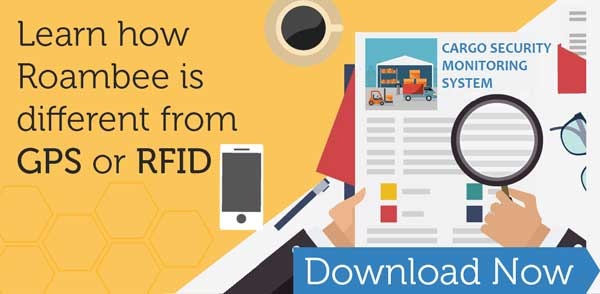There are plenty of warehouse and cargo trailer security systems out there. Most of those include:
- Technologies to monitor the warehouse itself — like CCTV cameras and access control systems.
- Systems for GPS fleet tracking — wired GPS vehicle trackers or OBD-II port-based tracking devices.
- In-transit security devices — like cargo container seals or locks.
But are these solutions enough for watertight supply chain security?
Probably not.
Cargo security isn’t just about restricting access and making it harder to steal inventory from a warehouse or pilfer from containers on the move. It’s also about recovering stolen goods, which in the long run, makes a huge difference to a supply chain’s operational as well as cost efficiencies.
Reducing risk and improving the odds of recovery makes it easier to:
- Replace missing stock.
- Reduce the need for replacement stock or buffer inventory and the costs associated with them.
- Minimize disruptions to operations.
The added security can also help you work out a better deal with insurance providers (who need to cover fewer losses) which can reduce both your premiums and your liabilities.
A growing awareness about the benefits (and dire need) for better cargo security systems has spawned a whole new generation of solutions that have branched out from inventory and fleet tracking systems.
Tracking technologies developed to monitor inventory movement in the warehouse or shipments in transit are now an integral part of cargo and inventory security systems. They’re being used to track goods end-to-end, monitor for pilferage, alert stakeholders the moment something goes awry, and in most cases, recover stolen items.
The tracking technologies are getting better, cheaper, and the cost of deploying and running wireless systems is going down as well thanks to cheaper data plans and better cellular connectivity.
If you’re looking for an end-to-end supply chain tracking solution that works as both an inventory management AND a security solution, here are seven things you should definitely look for straight out of the box.
1. It Secures Inventory, Not Just the Warehouse
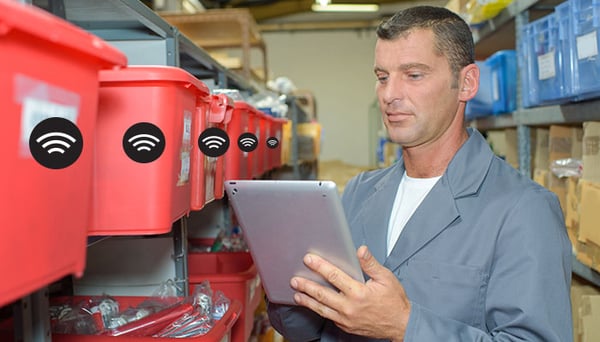
Securing your warehouse using CCTV cameras, access control technologies, or even increasing the size of your warehouse security team doesn’t always translate to better security in the warehouse, neither does it guarantee you’ll be able to recover goods once they’re stolen.
Hardware breaks down, people make mistakes, and more often than not, these options can’t eliminate employee theft or even tell you if something has been stolen with certainty.
The speed at which you detect theft or pilferage is important as well, it’s easier to catch thieves and recover stolen goods within the facility itself if you’re aware of an incident within a few minutes of it happening.
The solution you use to secure goods in a warehouse should give you visibility at an inventory level.
It’s easier now thanks to low-cost wireless tracking technologies like RFID or Bluetooth low energy (BLE) tags that work brilliantly for item-level monitoring.
Learn how you can use hybrid IoT technologies to secure goods regardless of whether they're in a warehouse or in transit.
2. It Tracks the Shipment, Not Just the Logistics Fleet
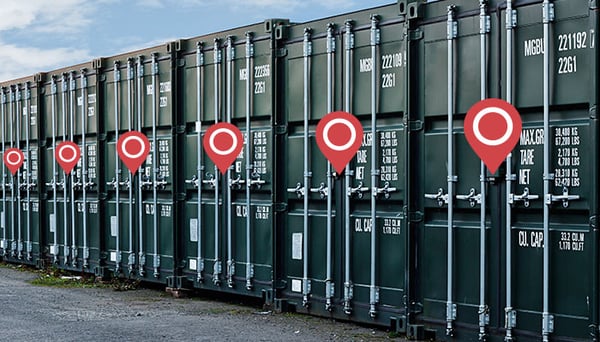
Tracking the vehicle or the container carrying your goods using a GPS vehicle tracker is helpful if your vehicle gets hijacked. GPS vehicle trackers can also flag security risks like unscheduled stops, route deviations, or lower than average speed.
These factors alone, however, cannot tell you with certainty about a security breach. An unscheduled stop at a border check post or a route deviation due to unexpected traffic aren’t necessarily a cause for concern, but they could be.
- There’s the possibility of pilferage — a few items lifted off a parked truck at a rest stop or check-post perhaps.
- There’s the possibility of a break-in — truck or container doors and locks are routinely tampered with at unprotected rest stops.
- There’s are also unsecured locations to contend with — intermediate facilities where trucks or trailers are parked at have less than ideal security measures in place.
It’s times like these that an added layer of security — through item-level tracking — can help better secure goods on the move, and help you sleep easier at night.
Some technologies work better than others for in-transit tracking.
For instance, Bluetooth tags work better than RFID tracking systems in transit, they require less hardware and power to accomplish the same feat, which makes them ideal for tracking items during long-haul or international shipments.
Similarly, a GPS container lock would be better than a GPS vehicle tracker for cargo trailer security; there’s no need to install a tracking system on the truck hauling your goods — definitely a plus point you’re using 3PLs or change transporters frequently and can’t rely on them to install and handle tracking systems for you — and you also get a clear log of when and where the trailer door is opened.
Better yet, some GPS container locks can also be controlled remotely, giving you complete control over when and why someone has access to your goods in transit.
3. It Can Track Items Until Last-mile Delivery

Last-mile deliveries are almost always part-load consignments. A wrong delivery in a sequence doesn’t just disrupt route planning, it’s also a liability.
ePOD apps, GPS vehicle trackers, or delivery fleet tracking solutions can give you an idea of where the delivery van is and whether someone signed for a delivery, but they can’t tell you if the wrong item was delivered. The only way you’d know is if an irate customer flags it and asks for an expedited replacement, which could mean costly delays for B2B operations — to say nothing of the lost business opportunities as a result of the bad experience.
You need package-level tracking for last mile deliveries to ensure you’re delivering in full, on time; discreet disposable Bluetooth tracking tags are a simple solution to prevent costly mistakes.
4. It Doesn’t Need Additional Infrastructure
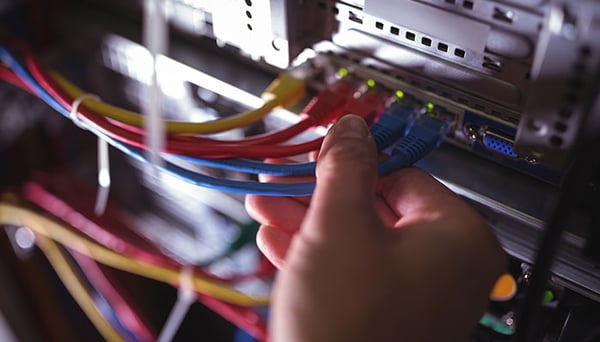
GPS vehicle tracking systems need installation and a constant power source, RFID solutions in a warehouse need Ethernet cables, Wi-Fi, and antennas to be installed.
Setting up infrastructure like that is difficult enough when you’re using your own vehicles or facilities, but it’s almost impossible if you’re leasing storage space or vehicles from 3PLs.
Unless you work out a deal that makes it worth their while, your logistics partners or 3PLs aren’t going to invest in a good tracking system; and if you do work out a long-term agreement to encourage them to accommodate your needs, you’re locked into an agreement that limits your options to engage better vendors down the line, should the need arise.
It’s better to have a tracking and security solution that’s “plug and play” — discreet wire-free battery-powered tracking devices that work on their own and can be bundled with your shipment or inventory — allowing you to keep track regardless of the mode of transport or facility you’re using.
Five Things You Need in a Live Tracking System to Secure Your Complete Supply Chain
5. It’s Scalable On-demand

There may be situations where you don’t need to track or secure every lane or facility all year round. You may also need to shore up security measures to accommodate fluctuations in demand or seasonal spikes.
In any case, you don’t always need to have GPS tracking systems online unless you’ve actually got shipments or inventory to track and secure. It isn’t feasible to go all-out and invest in tracking hardware unless you can stomach the cost of idle hardware.
It’s easier (and more cost-efficient) to opt for a tracking security solution that you can lease and scale to meet demand without relying on any significant capital expenditures from your side.
There are several technologies available right now — customized wireless GPS shipment trackers for entire consignments, or Bluetooth Low Energy (BLE) tags for inventory tracking — that you can lease and deploy at your convenience, allowing you to secure everything you need to while still keeping security expenditures low.
6. It Doesn’t Overwhelm You With Alerts
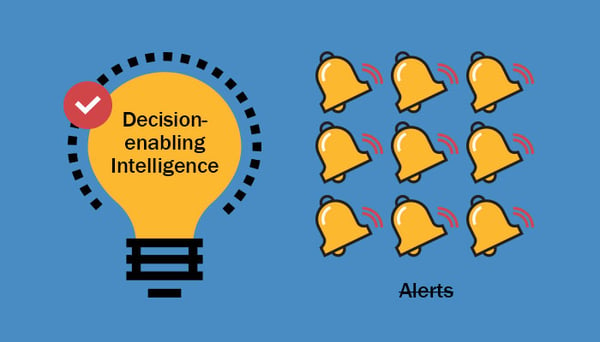
Inventory tracking and cargo container security systems to secure goods in transit can, like GPS locks for example, can tell you if a trailer door was opened, where it was opened, and whether it was at an unauthorized or unsecure location.
Sometimes, however, systems like these can cough up too many alerts, alerts that could be triggered by false alarms or routine things like a customs inspection or an unscheduled order picking at a warehouse that may not need your immediate attention.
Figuring out which alerts need to be acted on (or ignored) shouldn’t always be up to you; you’d waste a lot of time sifting through what could be minor issues. Your security system should be able to sift through the noise and flag only what constitutes a real security threat.
Intelligent supply chain security systems that couple tracking data with big data analytics platforms can help. By analyzing past patterns, taking additional data into account — like when container or warehouse door is open and an unplanned inventory movement occurs in tandem for instance — a smart security system can help interpret the patterns in live data to determine whether there’s a real security risk or not.
Knowing for sure means you’re surer about when to act, saving precious man-hours and resources that would otherwise be lost chasing false alarms.
7. It Doesn’t Just Warn You, it Enables You
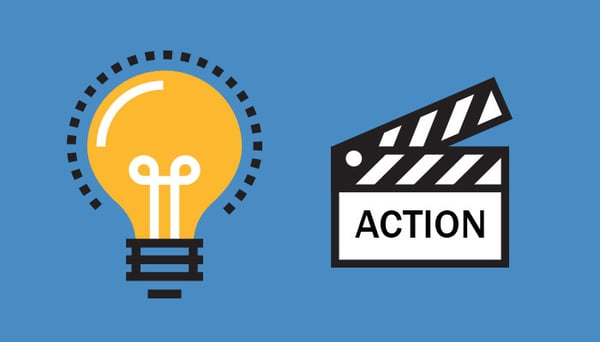
An alert about incidents like inventory leaving your warehouse without proper authorization or a trailer security seal being tampered with at a wayside rest stop isn’t enough.
Your security system should flag it with the right stakeholders, alert the authorities when necessary, and trigger the appropriate sequence of events, which increases the odds of theft prevention and the recovery of stolen goods.
For most companies, it’s not always feasible to set up and man such complex systems in-house, especially for global shipments and operations that traverse time-zones; for most, it’s hard to justify the cost of setting up response and recovery teams.
That’s where a supply chain Network Operations Center (NOC) can help.
A leased supply chain security system should offer a suite of services, including an outsourced operations center. Let your security company handle crisis management through a dedicated team of experts that can coordinate with local law enforcement and field staff to initiate recovery within minutes of an incident occurring.
That gives you and your team the time and peace of mind to focus on the bigger picture, while still ensuring effective incident management and supply chain risk mitigation.
In Summary
To achieve end-to-end supply chain security, you need a tracking solution that:
- Can monitor goods in transit as well as inventory in the warehouse.
- Can be deployed easily and runs without any additional infrastructure.
- Can scale on demand without any significant impact to cost and operability.
- Can give you the right alerts and information that enables better decision-making.
With that in mind, Roambee created a suite of solutions that leverage multiple technologies like GPS, GSM, Wi-Fi, and Bluetooth Low Energy (BLE) to create the industry’s first IoT-enabled unified security system that works across the supply chain – in the warehouse, in transit, and through the last-mile.
See how it works!


